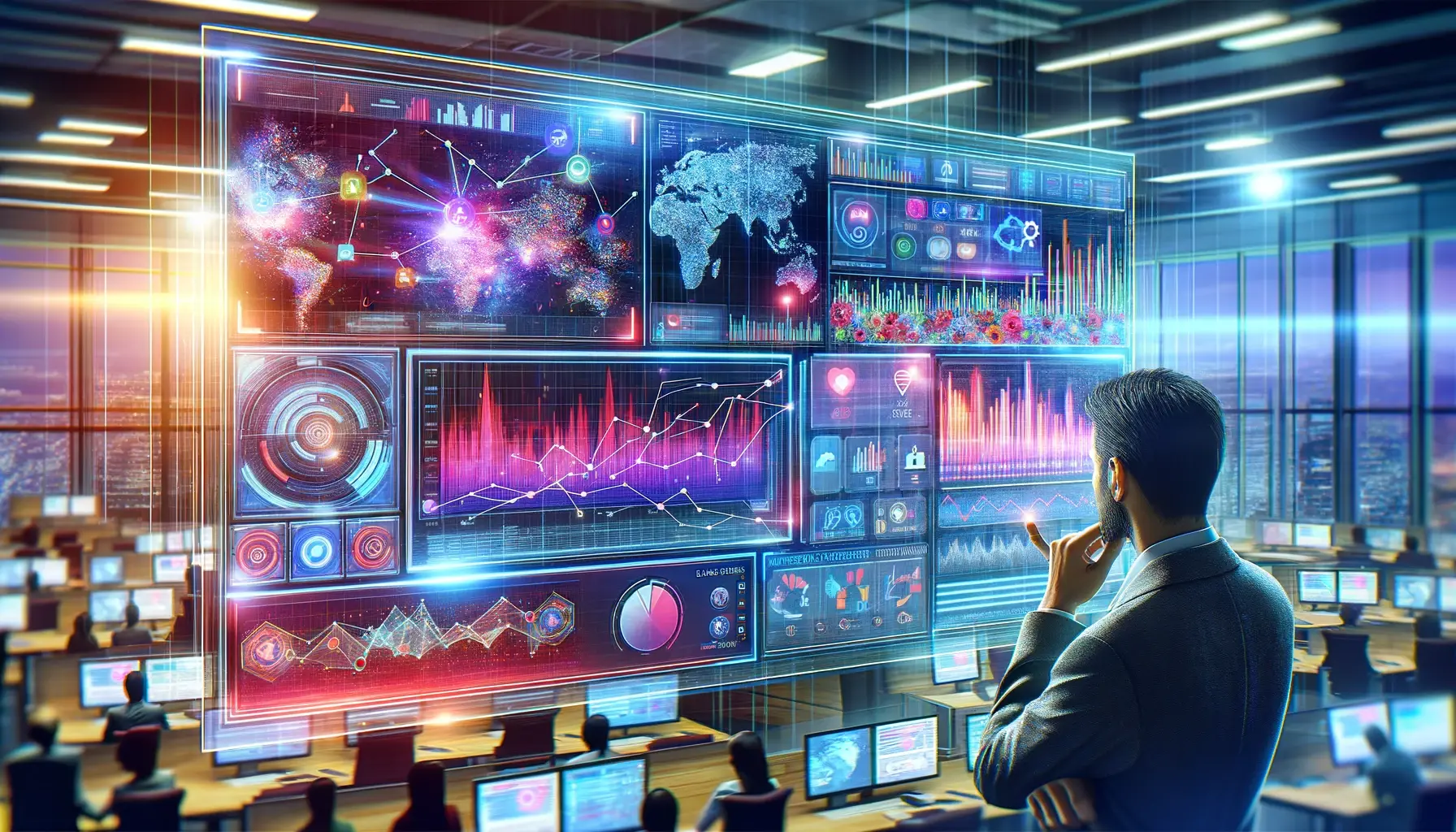Top 5 AI Use Cases In Journalism Social Media Monitoring
- By Matt

Attention Art Conservators and Technology Enthusiasts!
The potential destruction of our invaluable historical artworks is not a distant threat but an imminent reality if AI is not harnessed in restoration efforts now.
In this article, we’ll reveal how AI can revolutionize historical art restoration, helping you avoid these devastating outcomes.
Key Takeaways
- AI-Powered Image Recognition enhances accurate analysis and identification of damaged artworks.
- Machine Learning for Color Reconstruction restores the original colors of historical pieces.
- Neural Networks for Filling Missing Pieces seamlessly replace damaged parts of artworks.
- Generative Adversarial Networks (GANs) offer realistic reconstructions of artworks.
- Predictive Modeling for Art Deterioration recommends preventive conservation measures.
Use Case #5: AI-Powered Image Recognition in Art Restoration
Starting our countdown at number 5 is the revolutionary use of AI-powered image recognition in art restoration, crucial for accurate analysis and identification of damaged artworks.
The Fear of Misidentifying Art Damages
Misidentifying damages in historical artworks can lead to incorrect restoration techniques, causing further deterioration. Manual analysis is error-prone and subjective, threatening the integrity of priceless artifacts.
This misidentification exacerbates the challenge of preserving our cultural heritage, leading to potential irreversible damage.
Consequences of Misidentifying Damages
- Incorrect restoration techniques
- Further deterioration of artworks
- Loss of historical authenticity
- Increased restoration costs
How AI Transforms Damage Identification
AI-powered image recognition systems analyze artworks with precision, identifying even the smallest damages that human eyes might miss. This technology ensures accurate assessment and appropriate restoration methods.
Implementing AI in damage identification enhances the accuracy and effectiveness of restoration efforts, preserving the integrity of historical artworks.
Table 1: Key Benefits of AI-Powered Image Recognition
| Benefit | Description |
|---|---|
| Accurate Damage Identification | Precise analysis ensures correct restoration methods |
| Preservation of Integrity | Maintains the historical authenticity of artworks |
| Reduced Restoration Costs | Minimizes the need for rework due to incorrect methods |
| Enhanced Efficiency | Speeds up the damage assessment process |
Table 1 highlights the significant benefits of implementing AI-powered image recognition in art restoration.
The Evolving Role of AI in Art Restoration
AI-powered image recognition is transforming how damages in historical artworks are identified, ensuring more accurate and effective restoration techniques. This advancement is crucial for preserving the integrity and authenticity of our cultural heritage.
As AI technology continues to advance, damage identification processes will become even more precise, further enhancing the preservation efforts of invaluable artworks.
Use Case #4: Machine Learning for Color Reconstruction
Employing machine learning algorithms for color reconstruction accurately restores the original hues of historical artworks, preserving their true appearance.
The Challenge of Faded Colors
Faded and discolored artworks lose their visual appeal and historical accuracy. Manual color reconstruction is subjective and often inaccurate, risking further loss of authenticity.
This color fading adds stress to the restoration process, making it difficult to maintain the artwork’s original appearance and value.
Difficulties in Color Reconstruction
- Subjective color interpretation
- Loss of historical accuracy
- Time-consuming manual processes
- Potential for further damage
Machine Learning in Color Restoration
Machine learning algorithms analyze historical data and original color compositions to accurately predict and restore the faded hues of artworks. This technology ensures a faithful reconstruction of the original colors.
Implementing machine learning for color reconstruction preserves the artwork’s authenticity and enhances its visual appeal.
Table 2: Key Benefits of Machine Learning for Color Reconstruction
| Benefit | Description |
|---|---|
| Accurate Color Restoration | Faithful reproduction of original hues |
| Preservation of Authenticity | Maintains the artwork’s historical accuracy |
| Time Efficiency | Automated processes save time |
| Reduced Risk of Damage | Minimizes the need for manual intervention |
Table 2 outlines the benefits of using machine learning for color reconstruction in art restoration.
Advancements in Color Reconstruction
Machine learning revolutionizes color reconstruction by providing accurate and faithful restoration of faded hues. This approach ensures that artworks retain their original visual appeal and historical value.
As machine learning technology advances, color reconstruction techniques will become even more precise, further enhancing the preservation of historical artworks.
Use Case #3: Neural Networks for Filling Missing Pieces
Neural networks are employed to generate and replace missing or damaged parts of historical artworks, seamlessly restoring their original appearance.
The Anxiety of Missing Pieces
Missing pieces in artworks create gaps that detract from their overall aesthetic and historical value. Traditional methods of restoration can be invasive and risk further damage.
This anxiety over missing pieces complicates the restoration process, making it challenging to maintain the artwork’s integrity and appeal.
Issues with Traditional Restoration Methods
- Invasive techniques
- Risk of further damage
- Inconsistent results
- High restoration costs
Neural Networks in Art Restoration
Neural networks analyze existing patterns and structures in artworks to generate accurate replacements for missing parts. This technology ensures seamless integration with the original piece.
Implementing neural networks for filling missing pieces preserves the artwork’s integrity and reduces the risk of further damage.
Table 3: Key Benefits of Neural Networks for Restoration
| Benefit | Description |
|---|---|
| Seamless Integration | Accurate replacements blend with original artwork |
| Preservation of Integrity | Maintains the artwork’s historical value |
| Reduced Damage Risk | Minimizes invasive restoration techniques |
| Cost Efficiency | Lowers restoration costs |
Table 3 highlights the benefits of using neural networks to fill missing pieces in historical artworks.
Challenges in Restoration with Neural Networks
Neural networks transform the restoration process by providing seamless integration of missing pieces, ensuring that artworks retain their original aesthetic and historical value.
As neural network technology evolves, restoration techniques will become even more sophisticated, further enhancing the preservation of invaluable artworks.
Use Case #2: Generative Adversarial Networks (GANs) for Art Restoration
Generative Adversarial Networks (GANs) offer realistic reconstructions of damaged artworks, preserving their historical integrity and visual appeal.
The Fear of Inaccurate Reconstructions
Inaccurate reconstructions can distort the original appearance and meaning of historical artworks. Traditional methods may not capture the nuances of the artist’s original techniques.
This fear of inaccuracies complicates the restoration process, risking the loss of the artwork’s true essence and historical significance.
Problems with Traditional Reconstruction Methods
- Inconsistent results
- Loss of original techniques
- High costs
- Time-consuming processes
GANs in Art Restoration
GANs leverage historical data and artistic styles to generate realistic reconstructions of damaged artworks. This technology ensures that the restored piece closely resembles its original form.
Implementing GANs for art restoration maintains the artwork’s integrity and enhances its visual appeal.
Table 4: Key Benefits of GANs in Art Restoration
| Benefit | Description |
|---|---|
| Realistic Reconstructions | Accurate reproduction of original artworks |
| Preservation of Techniques | Maintains the artist’s original style |
| Cost Efficiency | Reduces restoration costs |
| Time Savings | Speeds up the restoration process |
Table 4 outlines the benefits of using GANs in art restoration.
Restoration with GANs: Challenges and Solutions
GANs revolutionize art restoration by providing realistic and accurate reconstructions, preserving the historical integrity and visual appeal of artworks.
As GAN technology continues to advance, reconstruction processes will become even more precise, further enhancing the preservation efforts of historical artworks.
Use Case #1: Predictive Modeling for Art Deterioration
Predictive modeling using AI forecasts the future deterioration of artworks and recommends preventive conservation measures, safeguarding cultural heritage.
The Anxiety of Unexpected Art Deterioration
Unexpected deterioration of artworks can cause irreversible damage, threatening their historical and cultural value. Traditional methods of monitoring and prevention are often reactive and insufficient.
This anxiety over potential damage adds stress to the conservation process, risking the loss of invaluable artworks.
Consequences of Unforeseen Deterioration
- Irreversible damage
- Loss of historical value
- High conservation costs
- Inadequate preventive measures
Predictive Modeling in Art Conservation
Predictive modeling uses AI to analyze environmental factors and historical data, forecasting potential deterioration and recommending proactive conservation measures. This approach ensures that artworks are preserved before significant damage occurs.
Implementing predictive modeling enhances the preservation of cultural heritage by preventing unexpected deterioration.
Table 5: Key Benefits of Predictive Modeling
| Benefit | Description |
|---|---|
| Proactive Conservation | Prevents damage before it occurs |
| Preservation of Value | Maintains historical and cultural significance |
| Cost Savings | Reduces conservation expenses |
| Enhanced Monitoring | Continuous assessment of environmental factors |
Table 5 highlights the significant benefits of predictive modeling in art conservation.
Preventing Deterioration with Predictive Modeling
Predictive modeling transforms conservation efforts by forecasting potential deterioration and recommending proactive measures, safeguarding artworks before significant damage occurs.
As AI technology advances, predictive modeling will become even more accurate, further enhancing the preservation of our cultural heritage.
Conclusion
In the rapidly evolving field of art restoration, the threat of irreversible damage and loss of historical integrity is ever-present.
Failing to adopt these AI-driven technologies means risking the preservation of our cultural heritage, resulting in higher costs and potential loss of invaluable artworks.
Latest Posts
- By Matt | 1 year ago
- By Matt | 2 years ago
- By Matt | 2 years ago
- By Matt | 2 years ago
- By Matt | 2 years ago
- By Matt | 2 years ago
- By Matt | 2 years ago
There are no results matching your search
Trending
There are no results matching your search

